Updated 3/01/2024
While I highly recommend going through each part of the guide, I decided to put together a shorter guide to start 3d printing, for your convenience. Links contained may be affiliate links.
Welcome to my little guide on how to start 3D printing quickly. In the last decade 3D printing has come a long way from the RepRap machines that had to be built yourself, to the most modern of Babmu Automagical Printamajiggers. In this guide we will cover all the basic items and steps you need to begin your 3D printing journey.
But first a few notes.
Legality – Is it legal? Yes. Caveats: Federally speaking, if you can go to a gun store and buy it, you can also make it (for personal use and not for sale or distribution). Your state laws will vary, do the appropriate research. NFA Items (short-barreled rifles, short-barreled shotguns, suppressors, and destructive devices should have an approved ATF Form 1 before manufacture.
Safety – This generally comes down to where you got your files from and how much you trust the developer. The releases I cover on this site are from The Gatalog, which is a collective with an immensely thorough community beta process and a history of releasing well-documented build packages. This means you are far less likely to do anything in error or unsafe as long as you can read.
Types – Most print projects fall into a category of “Frame or Reciever”. This means that the serialized part (per US regulation) is 3d printable, but the remainder of the parts must be purchased and are not intended to be DIY’d by any individual. These are referred to in the printing community as Printable Frames. The other type of project is a fully printed project, akin to the FGC-9. They are intended to be fully DIY’d using an assortment of tools. These are classified into either Hybrid or Primarily Printed by the community.
Which Printers are Recommended?
There are many types and models of 3D printers to choose from on the market today and most will do just fine assuming you have a 235×235 minimum print bed area. This is the most common size of print bed and it’s what most of our developers take into account when they are designing models. We at CTRLPew and others across the internet have spent thousands of hours researching and testing 3D printers and these are the standouts from the crowd.
Best Price vs Performance – Ender 5 S1

My previous recommendation for the Sovol SV07 has been rescinded.
The Ender 5 S1 has been the workhorse of my first print farm since the beginning. The layout of this machine gives better stability and performance for long and tall prints at working speed compared to the Ender 3 and other bed slingers.
Purchase Links
Best for the Budget – Ender 3 V3 SE
The Ender 3 V3 SE retails for just north of $200 and its predecessors have been a standard recommendation for of most 3D printing communities. This next generation of Ender is no different. A standard 220×220 build plate and a standard set of upgrades like assisted leveling are expected in 3D printers of this era. Its standard. Its cheap and it works. An excellent choice for a first printer or a second printer on a budget.
Purchase Links
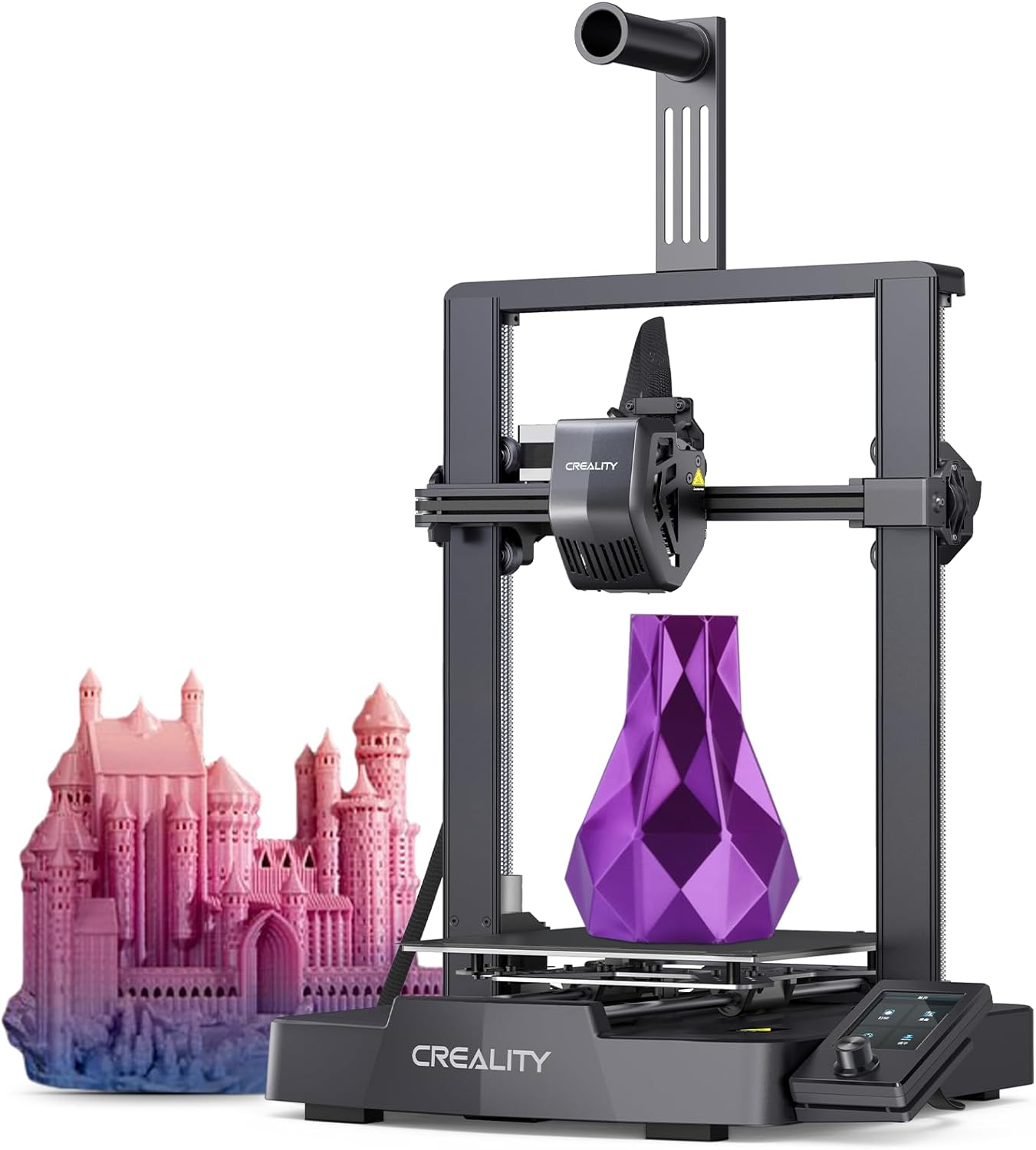
Top of the Line – Bambu Lab X1 Carbon with AMS
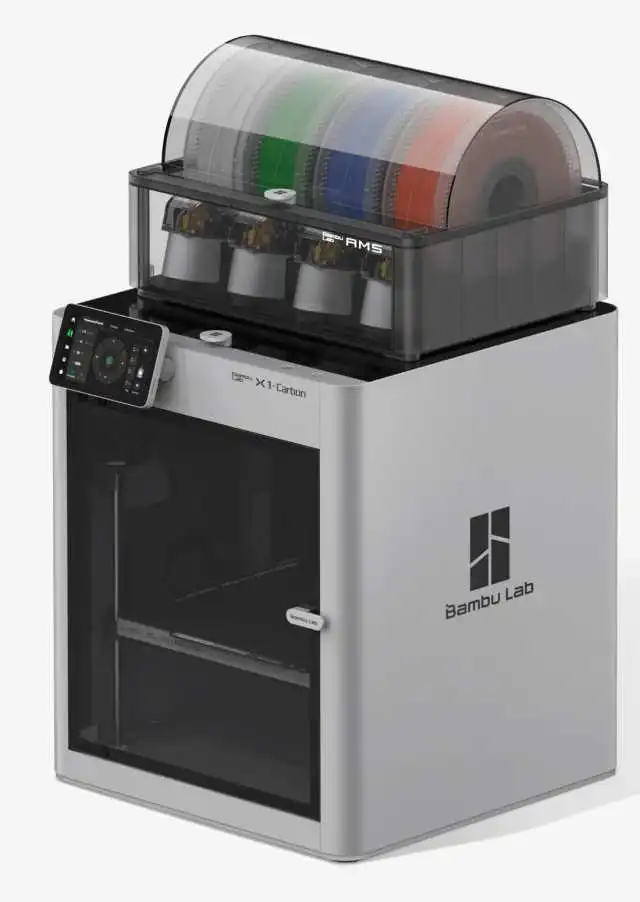
Bambu is well loved by our community. Their printers are well built and produce exemplary results but they are also filled with proprietary parts and software. You do not have to have a Bambu to produce good prints but it does make it a little easier. That ease comes at a price of $1500 USD.
Its worth it to some ( I have 2) for others its overkill and with the amount of proprietary trinkets involved in this machine some think it isn’t worth while. I, personally, am on the fence.
(Pew’s Note: This printer has its own proprietary slicer that you will have to use to enable all its features. It is cloud based so your data is shared with the parent company. It can be worked around but you should be aware of this.)
Purchase Links
Optional Upgrades
Some of the printers will come with these upgrades already. Pay attention to which one you get and find the appropriate module if necessary.
PEI Build Plates
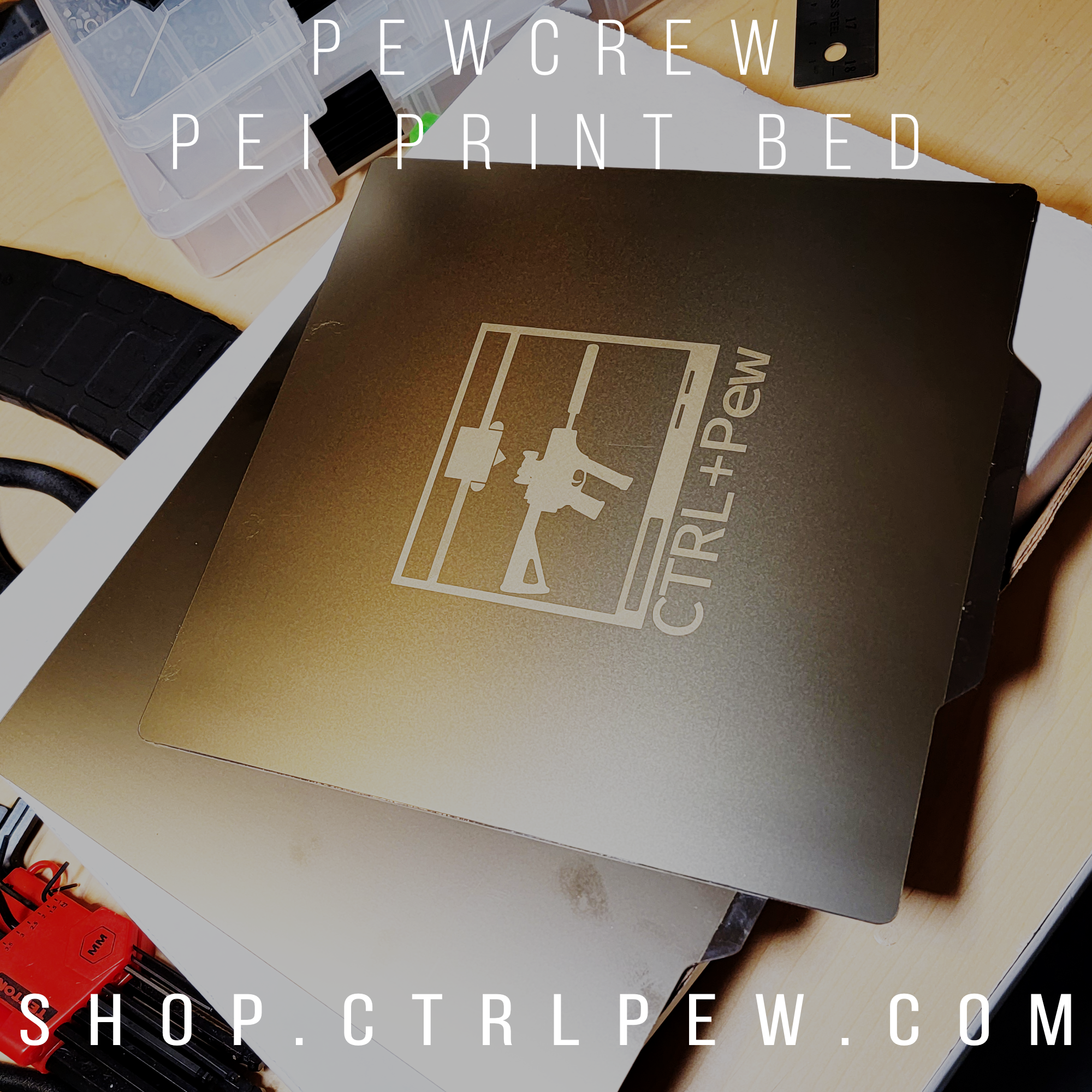
It’s hard to stick your print to your earlier print if your print doesn’t stick well. PLA Pro and PEI print surfaces were meant to go together.
When hot the stick parts reliably. When cool the parts release easily and most are magnetically attached to the print bed so you can remove them from the printer before removing your parts to avoid straining the print bed. Keeping it level longer.
I make my own for the Ender 3 and similarly sized printers, should you want to support us here at CTRLPew. Otherwise, there is a broad variety of other sizes available on Amazon. It’s hard to go wrong.
Direct Drive Extruder
Most 3D printers will come with a direct drive extruder these days. If yours does not there are probably upgrade kits available for it. You will have to do some research as you your specific model but it should be a plug-and-play addon with only some minor tweaking to your slicer profile to make it work. This will let you work more easily with flexible filaments like TPU. Making squishy things is nice.
I have linked to the Creality Ender 3 versions since most will have an Ender 3 or clone.
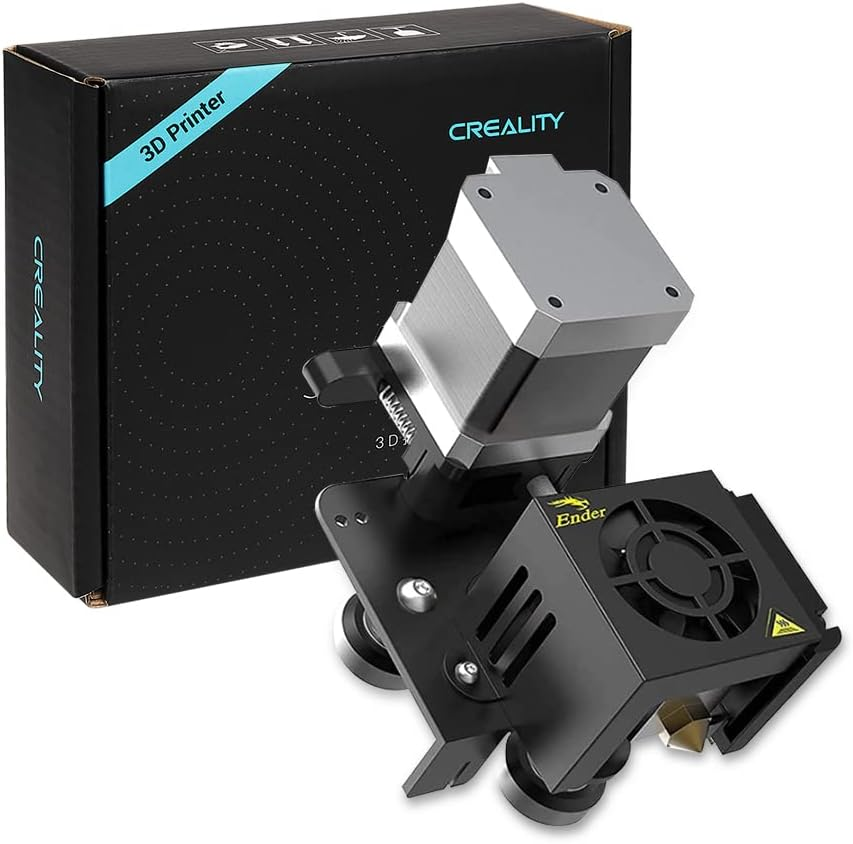
All Metal Hot End
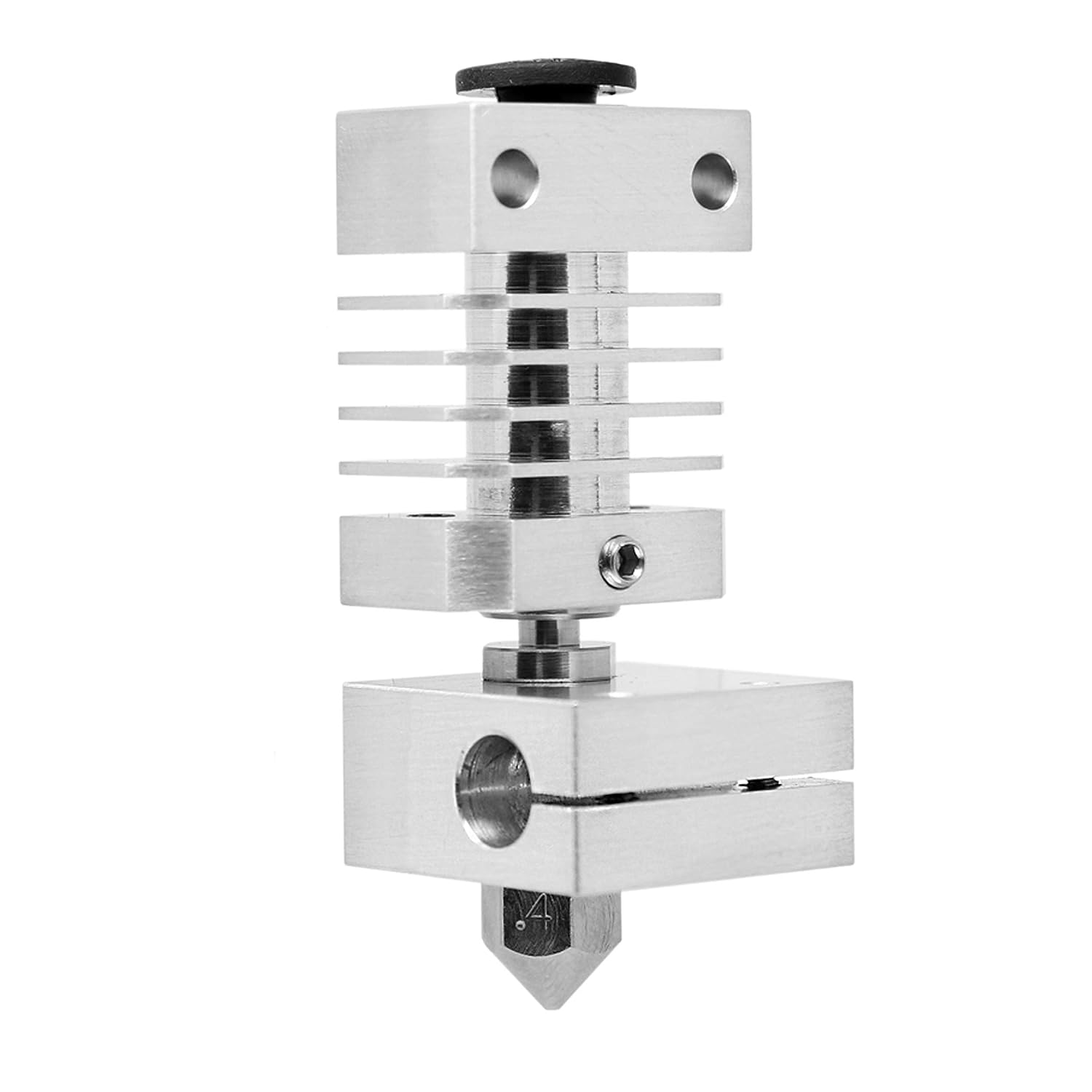
Make it hot, hot, hot. An all-metal hot end will let you reach the required temperatures to print properly in nylon, and nylon is very good.
Upgrading to this will take some firmware editing once you’re ready for nylon but installing it is plug and play with minor slicer editing.
I’ve linked the Ender 3 version since that’s what most will have, some research will be required to find one compatible for your machine if it’s something else.
Recommended Tools
- Small gunsmithing hammer – Best for driving in pins or using punches to knock support material out of pesky screw holes in your models.
- Feeler Gauges – A great and much more precise tool for leveling your bed.
- Food dehydrator – Plastic Filament absorbs moisture from the air. If you have a spool that prints badly it might be due to moisture. A dehydrator is an optimal tool for fixing this.
- Calipers – Measuring is important. Check the parts you make and use the data to calibrate your printer.
- Needle files – Useful for cleaning up inside tight spaces
- Metric Drill Bits – Most of guncad is done in metric units. You will encounter metric holes.
- Imperial Drill Bits – Holes need drillin.
- Allen keys – Because hex head screws are better.
- Roll pin starter punches – Roll pins suck. Having the right tools helps.
- Roll pin punch – See above.
- Standard Punch – Pins need punchin.
- Chisels – Good for smoothing flat surfaces and clearing stubborn support material.
- Pliers – Grip, rip, and tear support material.
- Shooting glasses – for when you cleanup prints. Plastic poots at eyeballs.
- Really good soldering iron – Great for smoothing surfaces and required for some builds.
Which Filaments are the Best?
If your printer is a hammer, filament is the nail. There are many different materials available for you to print with but the key considerations for beginning are filament cost, availability, and ease-of-use. That last point is important. A new printer, excited about the possibilities will run to a forum and ask what the strongest material is. The answer is some kind of nylon. However, nylon filament is expensive and difficult to print with. So a new printer starting on that without knowing anything about the printing process will struggle forever and most likely give up before producing anything. As a general rule. The more durable the material the more difficult it will be to print with. That being said, we do not recommend starting your printing adventure with anything nylon or carbon fiber. After delving the depths of the darkest web we have returned with a few suggestions for starting materials and brands.
Both PLA Plus/+ and PLA Pro are more durable than their base PLA material and have withstood the collective abuse of hundreds of thousands of rounds from the 3D printing firearm community. All this while still being easy to use and learn with. Perfect for a beginner printer and there are many colors and finishes to choose from. They two
PLA + / PRO
Suitable for most prints this material is easy to work with and durable enough for structural printing. It has been the standard material for firearm printing for the last few years, and its durability has been well-tested. It’s also relatively cheap at about $22-$24 per spool. There are other more durable materials but they also come with a higher cost and tougher requirements on both your skill as a printer and the equipment you use. For a beginner, it’s not recommended.
Pew’s Pick
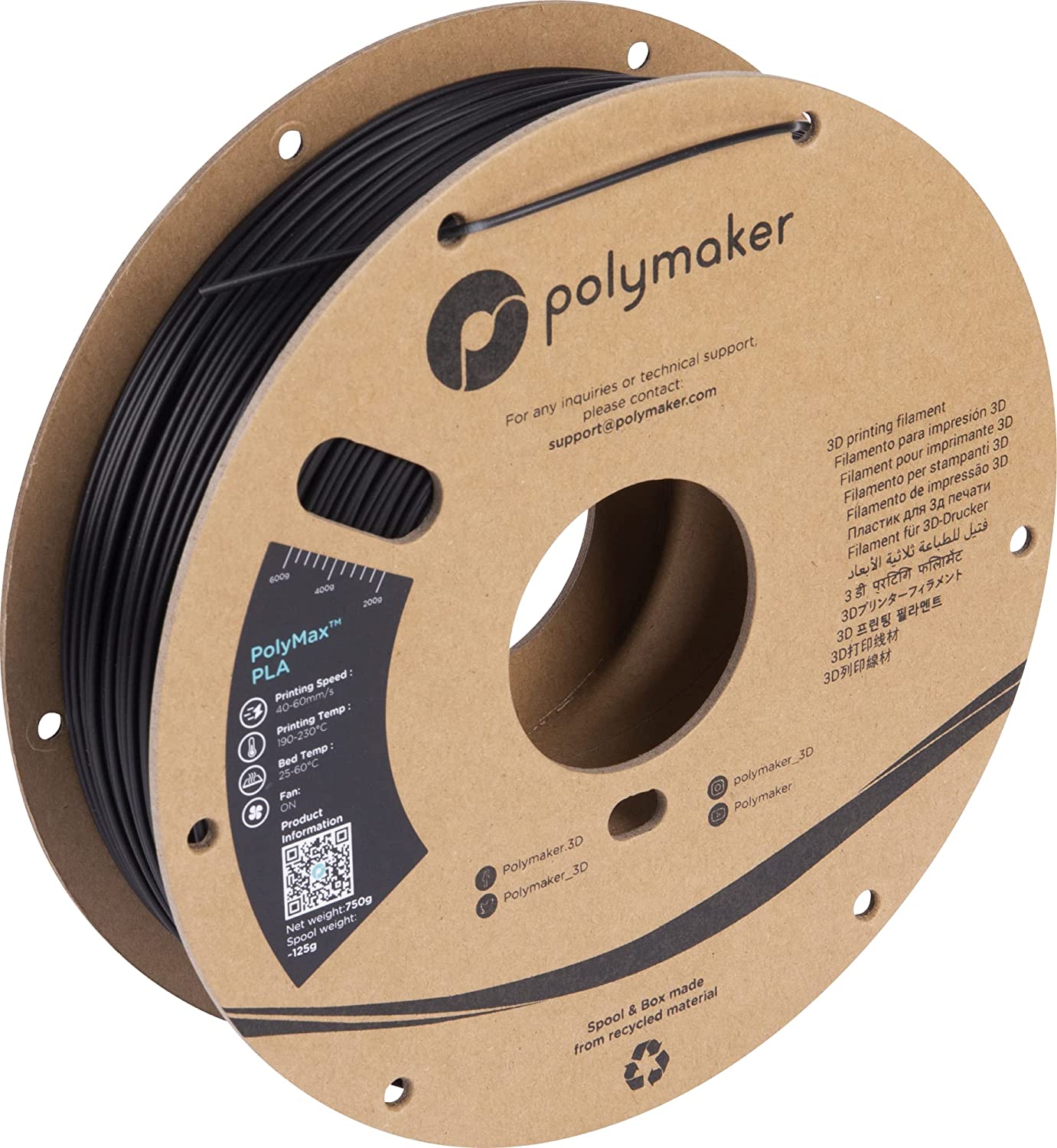
Polymaker PolyMax/Tough PLA
Polymaker PolyMax has demonstrated an exceptionally high level of performance for this material and excellent finish quality and quality control. This is my material of choice for finishing a print to show off. These are commonly half-sized spools for $24 but for me, the finish quality alone is enough to justify the extra cost.
Purchase Links
Runner Up
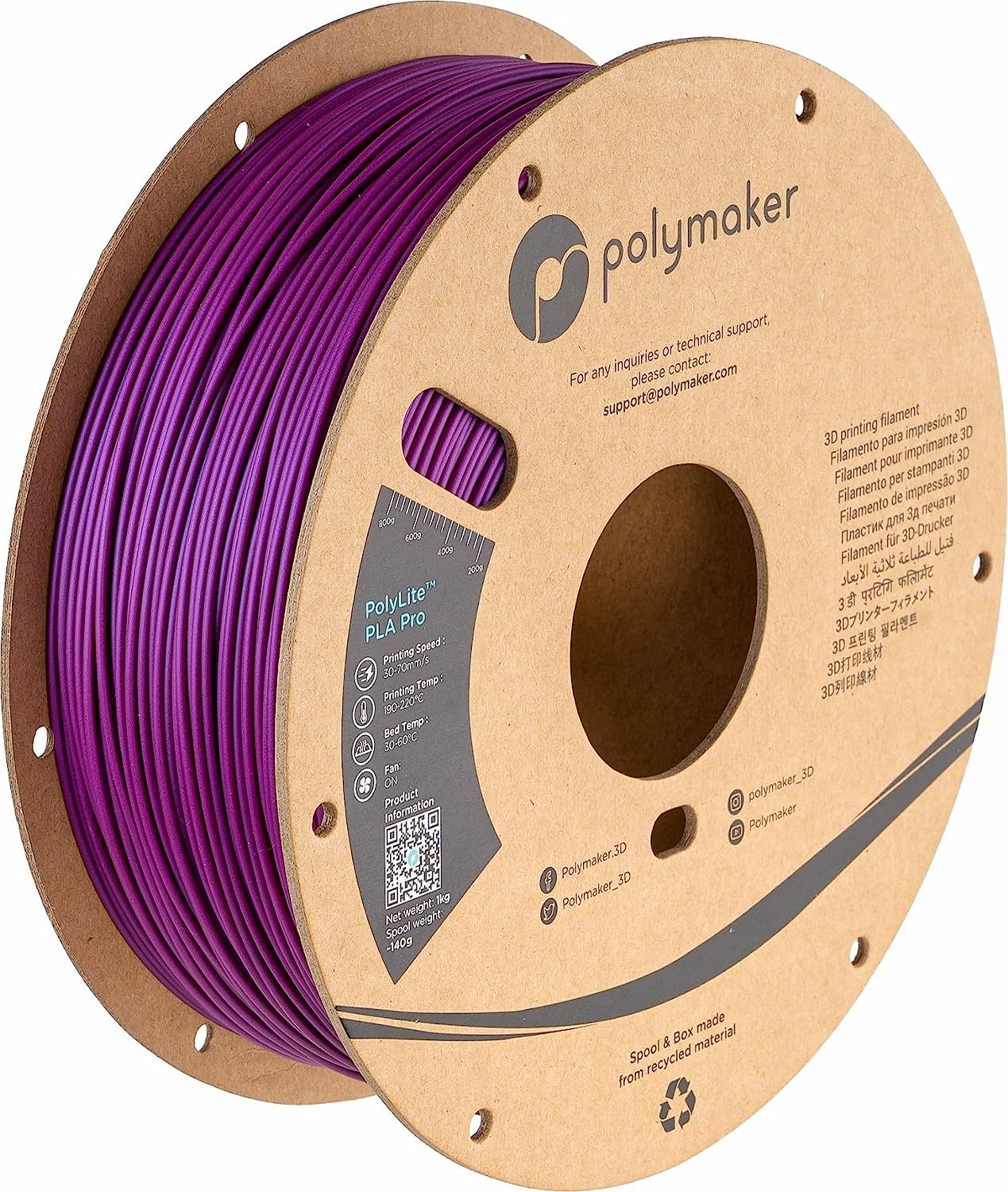
Polymaker PLA+
Polymaker’s PLA Professional(+) is a nice utility filament for every day and prototype printing. It was difficult to choose between this and the 3rd place Oveture filament. The deciding factor is Polymaker’s involvement and willingness to interact with the 3d printing firearm community.
Purchase Links
Just as Good
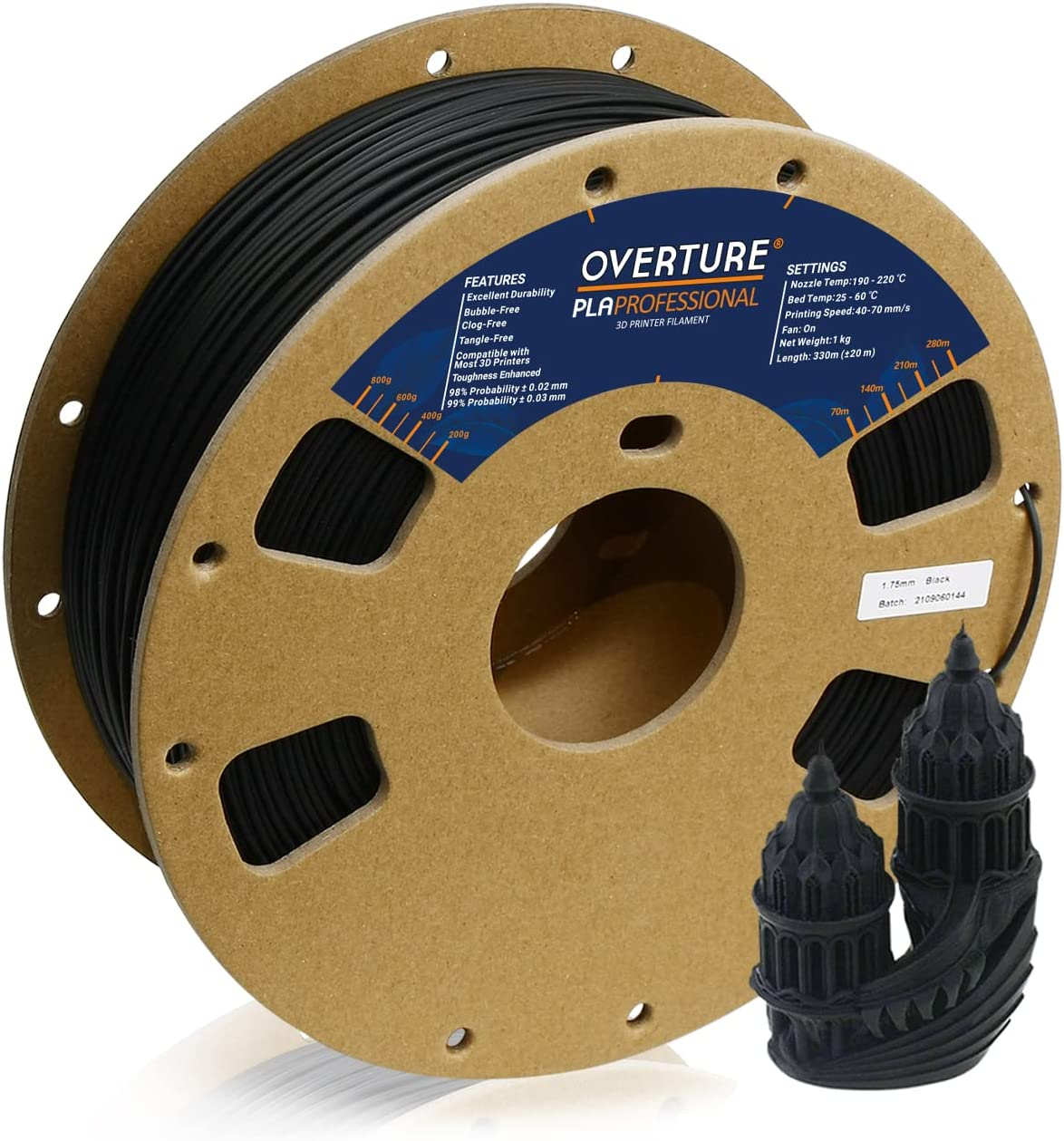
Overture PLA (+/Plus/Pro)
Overture is Amazon’s house brand of filament. It has performed very well and consistently in testing and is frequently on sale on Amazon. It’s my go-to for everyday prints and design test prints.
Purchase Links
Nylon
For the advanced printbois and printers. Nylon is a pain to work with properly. It readily absorbs moisture from the air. It must be properly dried before printing. Its high process temperature means you must have an advanced printer or upgrade your machine to be capable of a 90c bed and 265c nozzle. It will be a trial to achieve. For those that manage well it you will have parts durable enough to EDC on the regular.
Pew’s Pick

Polymaker PolyMide COPA
Avaliable in white and black the Polymaker COPA is one of the easiest nylon filaments I have worked with. This requires less specialized handling and is less concerned with moisture leading to a lower probability of print failure for these reasons. 100% a getting started in nylon material.
Purchase Links
Runner Up

Overture Nylon Filament
Overture has been a standard utility filament for us here for ages. Its consistent and cheap even if it isn’t the prettiest.
Purchase Links
Just as Good
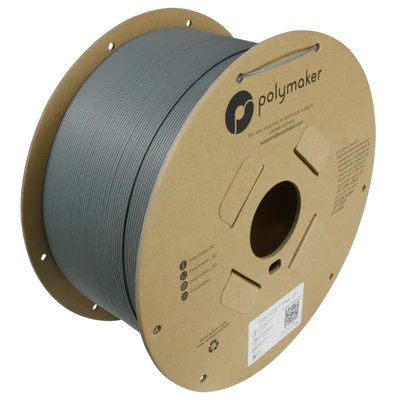
Polymaker PolyMide PA6-GF
Once you get the feel for the COPA and get started in nylon this PA6 GF should be next in line. Glass is superior to carbon fiber. FYI.
Purchase Links
Software Recommendations
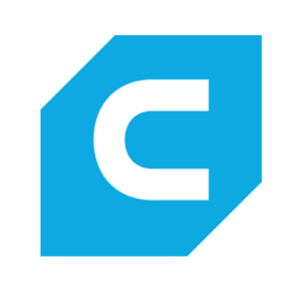
Cura – The standard
It was first, free, and open source. All good things. Its a good start and most printers have profiles built for this already. Although its a little dated now.
Download from Ultimaker
Prusa Slicer – Well Tested & Loved
Another open-source favorite slicer of the community is Prusa Slicer. This software is a little more refined and has some treats inside for the advanced gun printer.
Download from Prusa3D
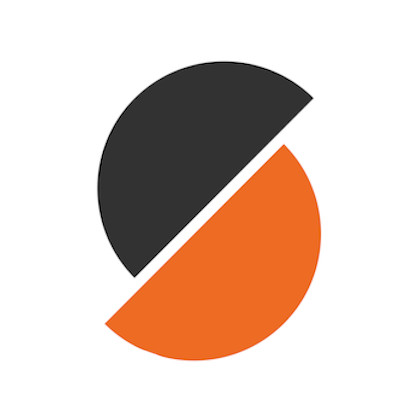

Orca Slicer – New Hotness
Taking queues from Bambu’s proprietary slicer, Orca Slicer, is a fresh, heavily featured, open source alternative. It will take a little bit of learning to use, especially if you havent used the Bambu slicer, but once you start you wont look back.
Download from Github
Slicer Settings
A quick and dirty of the default settings for your slicer software. This is a broad suggestion for default settings. Use the settings from the readme file in the download or from your own printer tuning experience. Lacking either of those default to these here.
- Layer Height – 0.2mm. Your printer likely comes with a 0.4mm nozzle and the maximum layer height we would recommend is half of that.
- Walls – Minimum 8. Walls add rigidity to your frame along all the major contact surfaces that experience load when firing.
- Infiill – 100%. Some “Engineers” will tell you that 89% is just as good. It isn’t. Squish matters. Fill it up.
- Top/Bottom Layers – Minimum 8. Same reason as walls.
- Generate support – yes
- Support – Everywhere. Its hard to squirt plastic floating in the air.
- Support Overhang – 45 degrees.
- Build Plate Adhesion Type – Personal preference – Brim. Does really well sticking parts down with some extra material around the base of the parts.
Where are the Files?

The Gatalog sets the standard for releases with community-run beta tests and proofed build documentation before public release. It’s hard to do a Gatalog build wrong. For that reason, they are the only releases I will cover on this site in any detail.
Other files can be found on Odysee and various other sites across the internet. Don’t trust anyone who demands you pay for the files. The money probably isn’t going to the developer and the files probably don’t work.
As I stated previously The Gatalog is the only group currently with robust testing and documentation standards before a public release.
Just say no FEDCAD. And their affiliated sites, Legio, Defense Distributed, ghostgunner.net, and ghostguns.com.

Where do I get the Parts Kits?

MAF Corporation
Use the code ‘ctrlpew’ and save 10%.
My favorite place to get parts kits has got to be MAF Corp. These folks sell wind chime kits made from firearm parts. Unlike other gun-art companies, they dont tamper with the parts so they could still be used in actual building. Dont forget to check out their fastener kits!
Now get your printer and get started. Most of the information here is covered in Getting Started 1 – What Printer should I buy? Give it a once over and then read Getting Started 2 – Now what?.

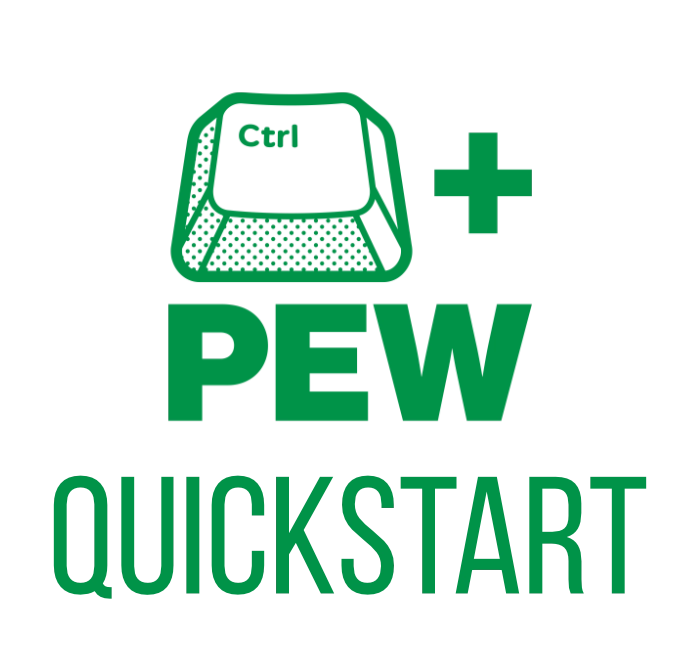
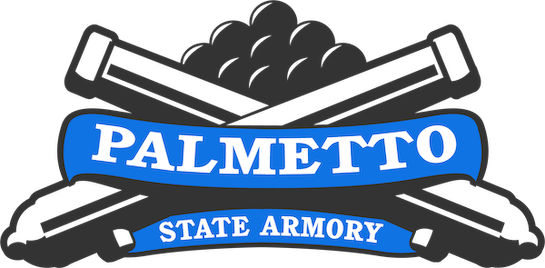
[…] in not having to insert and eject your SD card all the time after using CtrlPew’s excellent guide on getting your printer put together. Fortunately, OctoPrint can […]